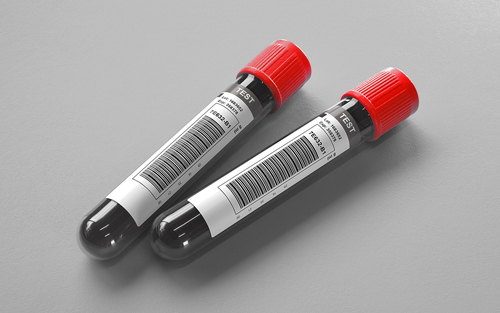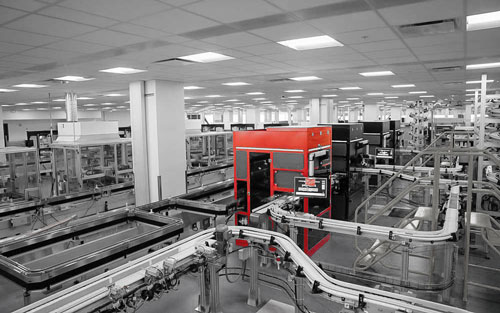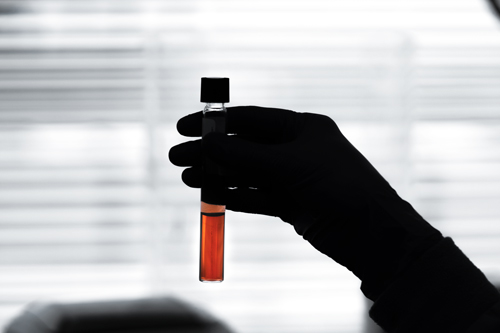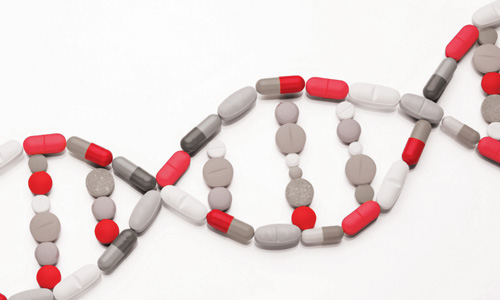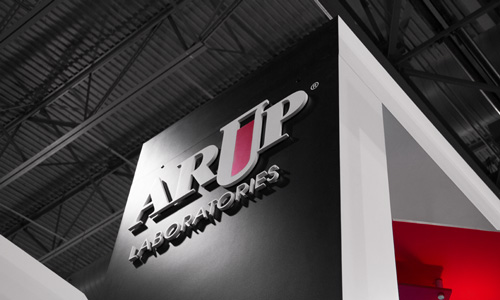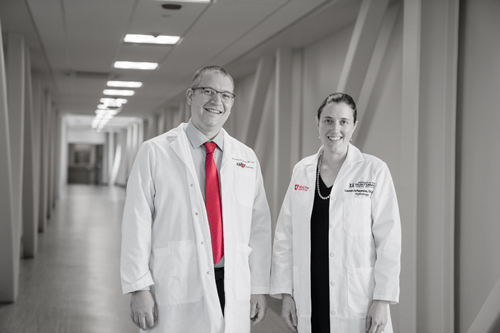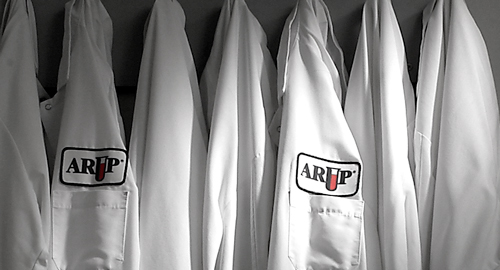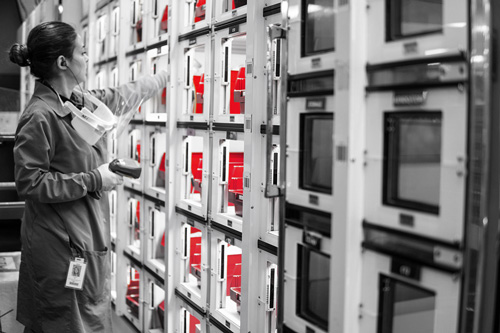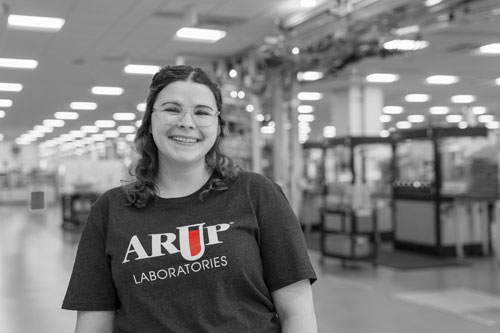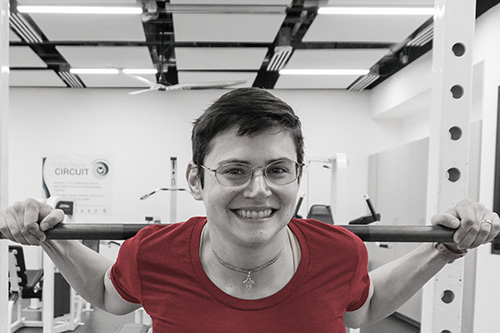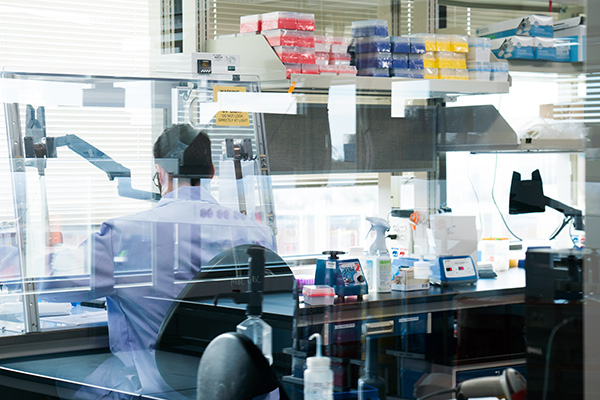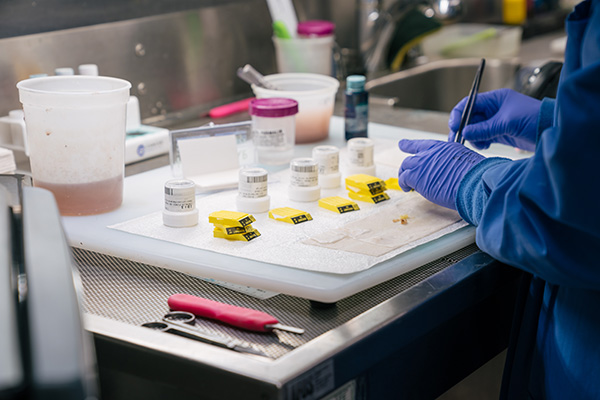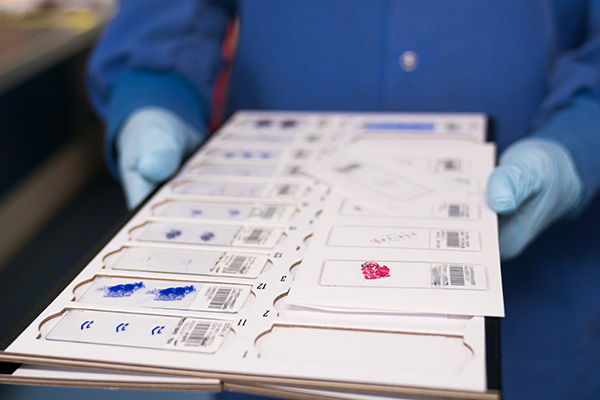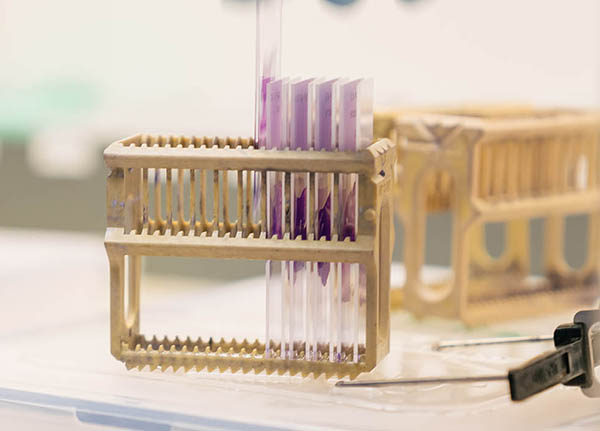Research Histology Core Laboratory
The ARUP Research Histology Core Laboratory serves the missions of ARUP and the Huntsman Cancer Institute by providing high-quality histologic services and consultation to support tissue-based research. We offer discounted pricing for all University of Utah-associated laboratories. Outside of the University of Utah, our services are available on an individual basis.
Research Histology Courier Drop Off, Huntsman Cancer Institute
1950 Circle of Hope Drive, Room N3970
Salt Lake City, UT 84112
Monday–Friday, 8 a.m.–5 p.m.
Research Histology, ARUP Laboratories
560 Arapeen Drive
Salt Lake City, UT 84112
Monday–Friday, 8 a.m.–4 p.m.
Contact
801-584-5280
APHistologyResearch438@aruplab.com
Project Questions?
- Pricing List
(Accessible through Pulse)
Feasibility and technical questions
Internal Client Setup
Project intake and billing changes effective September 28, 2023:
New and existing clients are required to submit projects with an established purchase order (PO) for billing. Internal clients will no longer need to set up an ARUP Research Histology account. Please follow the steps and use the UShop Marketplace link below to set up a PO.
- Contact APHistologyResearch438@aruplab.com for project feasibility and to receive a Research Histology Requisition form.
- Establish a PO through UShop Marketplace. Project submissions without a PO# will be held until receipt of request information.
• Instructions for creating a PO in UShop for Research Histology
• UShop Helpdesk: 801-585-2255 or ushop@utah.edu
• Huntsman Cancer Institute finance inquiries: hci-srbilling@hci.utah.edu - Submit labeled cassettes submerged in 70% ethanol in a leak-proof container to the drop-off location at Huntsman Cancer Hospital or the Research Histology Core Lab at 560 Arapeen Drive. Email the accompanying requisition form to APHistologyResearch438@aruplab.com.
- Following sample submission, a project confirmation email will be sent outlining current turnaround times. Projects must be submitted to the drop-off location by 1:00 p.m. to be processed the same day.
- When your project is completed, the provided PO# will be billed and you will be notified via email that your project is ready for pickup at the same location.
Services Provided
- Decalcification
- Processing
- Paraffin embedding
- Tissue sectioning
- Shaves/scrolls
- Tissue punches
- Frozen sectioning
- Tissue microarray (TMA)
- Repair of broken slides
- Wax-dipped slides
- Special staining
Human Specimens
Utilization of ARUP-owned human archival tissue requires previous approval. When submitting a requisition form to the ARUP Research Histology Core Laboratory, you are declaring that the information provided is complete and correct, acknowledging that the principal investigator has ultimate responsibility for the conduct of the study and the ethical performance of your project, and ensuring that the request is fully compliant with the institutional review board (IRB) protocol number provided. The Research Histology Core Laboratory is not responsible for any protocol violations.
Submission Guidelines
Instructions for submission of formalin-fixed, paraffin-embedded (FFPE) specimens, recently collected fresh specimens, paraformaldehyde-fixed specimens, and specimens that contain bone
Terms and Definitions
Explanation of terms used in embedding and orientation, cutting/sectioning, and preparation and embedding (of frozen specimens)
FAQs
Frequently asked questions (FAQs) regarding services and supplies provided, turnaround times, and technical aspects of projects
Recommended Products
Suggested products for submission preparation

